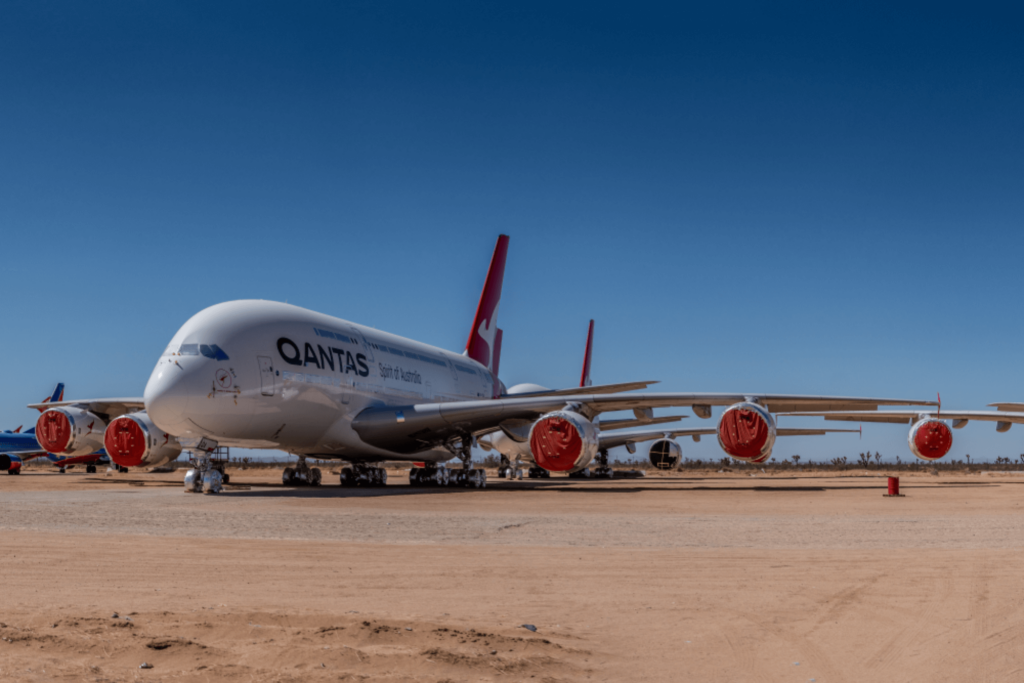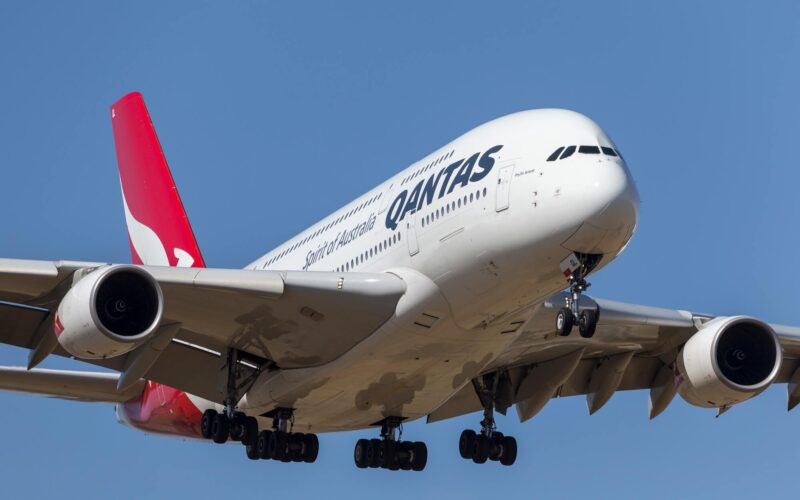Qantas has announced that it will not meet its intended goal of having all 12 of its Airbus A380s back in service by the end of 2024. The announcement comes as the Australian carrier faces ongoing complications relating to supply chain constraints and MRO (Maintenance and Repair Organization) issues.
The airline removed the A380 from its fleet during the pandemic, ferrying each of its 12 A380-800 superjumbos to Victorville Airport (VCV) in the Californian desert for long-term storage.
The airline has since reactivated 10 of the aircraft, although two are currently sitting on the ground at Abu Dhabi International Airport (AUH) in the Middle East (aircraft VH-OQA/OQC). The pair were ferried to an MRO facility at the airport at the end of 2022 and have been there ever since. The airline is yet to announce when the two airplanes are likely to return to service.
The remaining eight aircraft are currently all used on Qantas long-haul services from Sydney (SYD) to London-Heathrow (LHR) via Singapore (SIN) as well as Sydney and Melbourne (MEL) to Los Angeles (LAX).
Adding to the carrier’s A380 woes, aircraft VH-OQL is due to be removed from the airline’s flying program in the coming weeks to undergo a full passenger cabin refurbishment. This will leave the carrier with just seven of its fleet of 12 A380s serviceable.

“Supplier delays and supply chain issues, including maintenance workforce and hangar availability, have impacted the plans for routine heavy maintenance and cabin upgrades on some A380 aircraft,” said Nick Bull, Qantas’ Head of International Cabin Crew, in an email to Qantas staff. “These issues are not unique to Qantas and are impacting airlines globally.”
The impact that the shortage of A380s in causing the airline’s long-haul operations is wide-ranging. Throughout July to October 2024, the airline will have to make the following adjustments to its flying program to deal with the shortfall of A380 capacity:
1.The switch from using Boeing 787-9s to A380s on the Sydney to Johannesburg (JNB) route will be delayed by three months.
2. The planned frequency increase on the Sydney to New York-JFK via Auckland (AKL) route which is currently operated by Boeing 787-9s from four to six per week is delayed from August 2024 to October 2024.
3. The airline’s B787-9 will operate the daily return flight from Melbourne to Los Angeles five days per week, with the A380s operating the other two services per week.
4. The airline’s Sydney to Santiago de Chile service will be reduced from four to three weekly flights between July 2024 and September 2024.
5. The daily roundtrip flights from Sydney to Dallas-Fort Worth will be reduced to six per week between July and August 2024.
6. The current nine roundtrips per week on the Sydney to Los Angeles transpacific route will be reduced to seven per week with all flights remaining on the A380.
Qantas’ fleet of 12 A380s has an average age of 14.4 years. The oldest is VH-OQA which is 16.1 years old and was delivered to the carrier in September 2008. The youngest is VH-OQL which is 12.8 years old and was delivered in December 2011. Once refurbished, each Qantas A380 will seat a total of 515 passengers in a four-class cabin configuration (14 first class, 70 business class, 60 premium economy, and 371 in economy).

